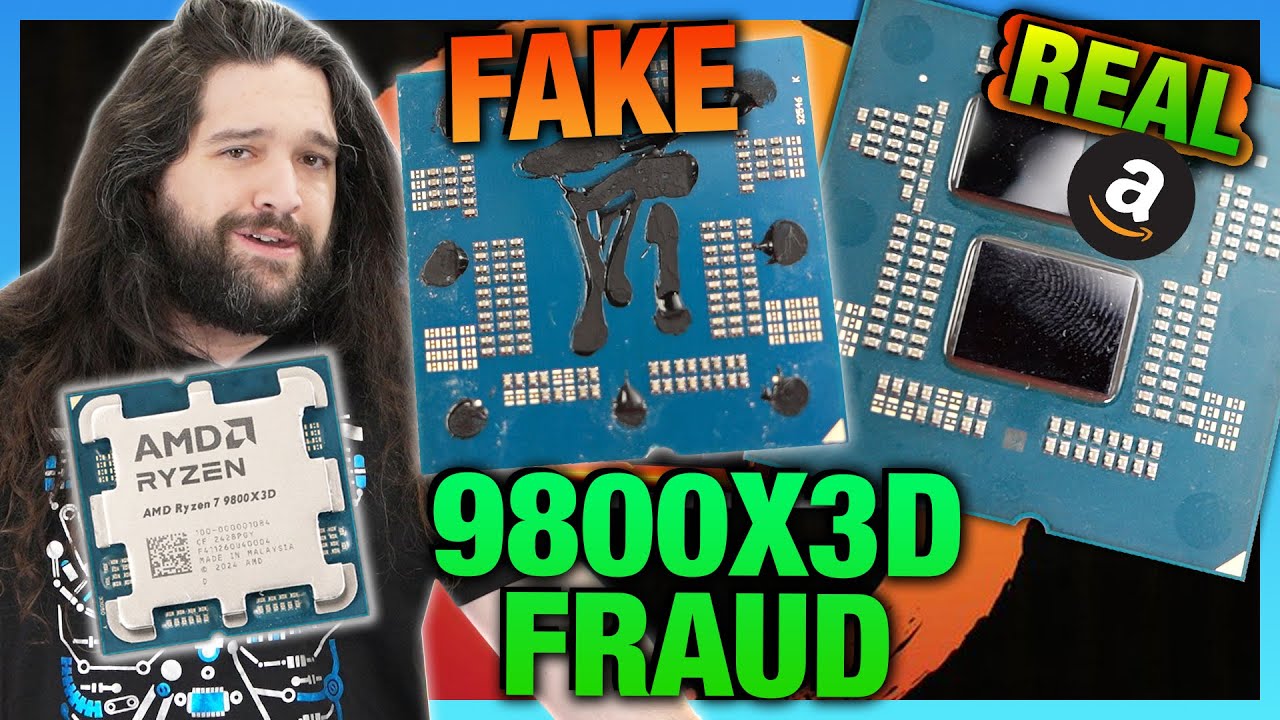The video uncovers a sophisticated counterfeit AMD Ryzen 9800X3D CPU that lacks essential internal components, highlighting the challenges of identifying fake processors through physical and digital discrepancies. It emphasizes the importance of buying from reputable sources, thoroughly inspecting CPUs upon receipt, and offers practical tips to help consumers avoid falling victim to CPU scams.
The video investigates a counterfeit AMD Ryzen 9800 X3D CPU sent by a viewer, revealing that the fake CPU weighs significantly less than a genuine one and lacks the essential silicon components. The host demonstrates the process of delidding the CPU by heating and removing the integrated heat spreader (IHS) to inspect its internals. Unlike the real CPU, which contains two chiplets, an IO die, and indium solder, the counterfeit was found to have none of these components, only a substrate with glue attaching the IHS. This discovery highlights the sophistication of the scam, as the fake CPU was designed to visually mimic a real one but was essentially non-functional.
The video further explores how counterfeit CPUs have been an ongoing issue in the tech industry, with examples from both AMD and Intel processors over the years. It discusses how scammers often use methods like rebranding lower-end CPUs or simply creating dummy CPUs without silicon. The host compares the fake 9800 X3D to genuine CPUs and points out physical and digital differences, such as discrepancies in the surface mount devices (SMDs) layout, packaging tampering, mismatched serial numbers, and the inability to scan the data matrix code on the counterfeit CPU. These differences offer potential ways for buyers to identify fake CPUs before purchase or use.
The investigation also touches on the challenges retailers and platforms like Amazon face in preventing counterfeit CPUs from reaching customers. The video explains how return fraud and improper handling of returned items can result in counterfeit or incorrect products being resold as new. Insights from viewers working in Amazon fulfillment centers suggest that mistakes in scanning returned items contribute to this problem. The host advises consumers to inspect and test CPUs immediately upon receiving them to ensure authenticity and functionality, emphasizing the importance of return policies and buyer protection.
To aid buyers in avoiding counterfeit CPUs, the video outlines several verification tips, including checking for tampered packaging, verifying holographic authentication stickers, scanning the data matrix code, and comparing the physical characteristics of the CPU against known genuine models. The host also notes that AMD has a four-step verification process, but it lacks a streamlined, user-friendly tool for instant serial number validation like Intel offers. This gap suggests room for improvement in AMD’s approach to combating counterfeit CPUs and supporting consumers.
In conclusion, while counterfeit CPUs like the fake Ryzen 9800 X3D are not widespread, the video stresses the importance of vigilance when purchasing high-value processors, especially from secondhand or third-party sellers. The host recommends buying from reputable first-party sellers and testing CPUs promptly after purchase. The video ends with a call for viewers to share information on how such sophisticated counterfeit CPUs are made and hints at future investigations into the sources of these scams. Overall, it provides valuable insights and practical advice to help consumers avoid falling victim to CPU fraud.
